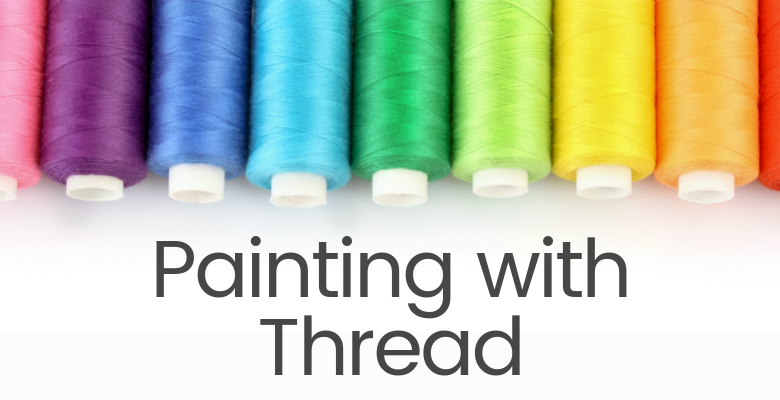The Role of Art in Embroidery: Painting with Thread
Jeanene Edwards of Fruit of Loom/JERZEES talks with Erich Campbell about the art of embroidery.

Apparel decoration requires a unique sensibility for color, design, and placement. Whether you are a screen printer, an embroiderer or digital decorator, decoration is a skill that takes time to master. Each form of decoration is unique in its own way. Erich Campbell, passionate digitizer and industry educator, makes a compelling case for the way embroidery is unique when it comes to learning the art.
Campbell started out as a writer in his younger years, writing for literary magazines and drawing on occasion. His true calling, though, is embroidery and digitizing. He has always been savvy with computers from developing websites, digitizing, and operating machines. Although technology is evolving in the embroidery world, Campbell believes that automation in digitizing doesn’t have the same result as a person with skill and an eye for thread.
“The problem is that there’s no software to this day that can look at the silhouette of a person and know that there’s a head, legs, arms, and a shirt. It cannot see the things that aren’t there so what it does is fill that area with one flat type of stitching,” said Campbell.
The art of embroidery lies in understanding the capabilities of the thread. Campbell has become known in the industry for the uniqueness of his stitching dimensions and textures in his work. He explains that breaking up the design with different angles, shapes, and height can change the appearance of the decoration and ultimately alters the appearance of the design.
“Even though a silhouette is all one color, when you move the light across it, the different angles of the stitches give it dimension, and it looks very much like a low release sculpture,” said Campbell.
The way Campbell describes his work is not unlike the art of sculpting, painting, or drawing the decoration onto the apparel. Embroidery brings decoration to life. Campbell believes that good digitizers are good interpreters, meaning they are able to alter stitching angles and add dimension to the decoration.
Light is another important consideration for embroidery. Campbell talks about how embroidery requires the decorator to play with light:
“You can play with the shine in the thread to make it more interesting because of how the light hits it. It’s not only about the color of the thread itself, but you can also change the perceived color of the thread based on angles and with the reflective properties of the thread. Embroidery lives on a curved surface, and as light passes across it and as you move around it, it changes. It’s very much alive as light changes and as it works with the light.”
Small refinements in the embroidery craft make a huge difference for Campbell when it comes to earning customers. Quality is something that individuals expect in decoration, especially in embroidery because the product takes longer to turn around than screen-printed apparel.
Decorating is more than just producing products for customers. Decoration, whether it’s embroidery, screen printing, or digital embellishment, requires a skill and artistry. How does your form of decoration bring out your inner artist?